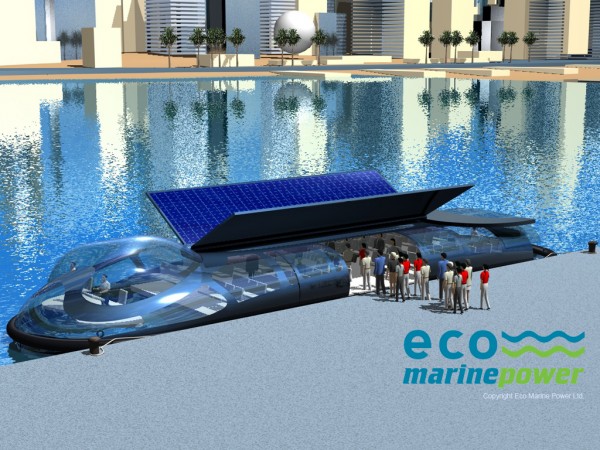Reducing fossil fuel use and noxious gas emissions over the next five to 10 years is absolutely essential if we are to avoid the worst consequences of global climate change. There are millions of cars and trucks on the road today, and along with the emissions produce by simply extracting coal, oil, and gas from the Earth, the carry most of the blame for high air pollution levels. It’s easy to blame cars and trucks because they’re right there, driving past our homes and businesses, leeching visible toxins into the air. But what about the vehicles we don’t see on a daily basis?
Every country in the world exports or imports something. And most of these goods don’t travel by car or airplane, the crisscross the world in the bellies of massive shipping vessels. The global shipping industry currently uses around 200 million tons of diesel oil annually, and it is estimated that the world’s merchant vessels emit around the same amount or more of sulphur oxide as do all the world’s cars, trucks and buses.

The engineers and shipping experts at Eco Marine Power aren’t afraid to think way outside the box when it comes to reducing shipping industry emissions. They’ve already imagined oil tankers powered by giant solar wind panels, and are moving forward to make these solar powered vessels a reality.
The Tonbo ferry, the company’s latest concept, uses solar panels to charge advanced lithium batteries. In addition an on-board low emission generator provides a back-up means to recharge the batteries if needed. As required, the marine grade solar modules or panels can be raised to allow passengers on board to have an unobstructed view or lowered to optimize solar energy collection.
EarthTechling caught up with Eco Marine Power’s Greg Atkinson to find out more about this new design.
ET: Before this, your company’s designs mostly focused on commercial vessels. What inspired Eco Marine to develop a hybrid passenger ferry?
Atkinson: We were inspired to develop the Tonbo Solar Hybrid Ferry because we saw a need for a low emission commercial passenger ferry able to operate on urban waterways or on lakes, rivers, bays. We also wanted to design a low emission, green passenger vessel that incorporated the most advanced renewable energy and power saving technologies available, hence the reason we work with a number of development partners.
The flexible nature of the Tonbo design means that it could operate as a passenger commuter ferry say in Hong Kong or carry tourists on a cruise across a lake in Japan. The technology behind the Tonbo Solar Hybrid Ferry could also be applied to other vessels such a tugboats & fishing vessels. We are also developing a smaller eco-solar urban commuter ferry called the Medaka.
ET: I live in the mountains, so the idea of using a boat to get around the city is foreign to me. How many cities around the world use passenger ferries, and what’s the overall carbon footprint of the industry?
Atkinson: I am not sure of the exact number and how many cities ferries are used in, but there are many thousands of ferry type vessels in service & they operate in some form in just about every modern city near a water such as San Francisco, Sydney, London, Tokyo, Hong Kong and of course where our company is based: Fukuoka, Japan.
Regarding emissions, here is a calculation from Wikipedia that might be of use: “The contributions of ferry travel to climate change have received less scrutiny than land and air transport, and vary considerably according to factors like speed and the number of passengers carried. Average carbon dioxide emissions by ferries per passenger-kilometre seem to be 0.12 kg (4.2 oz).”
Finding emission data just for ferries is even more difficult. Generally it just all goes under the heading of “shipping.”
ET: What amount of emissions will the Tonbo eliminate in comparison to a normal passenger ferry?
Atkinson: We estimate that using the Tonbo will slash passenger ferry emissions by 40+ percent. But this number is dependent on how the ferry is operated. For example at lower speeds where the ferry was able to re-change the batteries from shore power then the reduction in emissions would be ever higher. Technically it would be possible to operate the ferry all day with zero emissions if there was good sunny weather and regular stops to recharge the batteries using shore power.

ET: Speaking of batteries, what’s the storage capacity of the Tonbo’s onboard Lithium battery?
Atkinson: The Tonbo will use 6.5kW Lithium battery modules and will include enough batteries to operate the vessel for around two hours at low speed. However this could be increased/decreased depending on the intended use of the vessel. For example extra batteries could be installed into the Tonbo design is the ferry/vessel was to operate in marine park where is would be moving slowly during sightseeing cruises. Of course extra batteries means extra initial cost but the Lithium battery modules we will use have a lifespan of around 20 years so that extra cost can be justified.
ET: I think I probably speak for everyone when I say we’re very excited to see the Tonbo in action! By what date do you hope to have a working prototype?
Atkinson: Our target for starting a project to build a commercial version of the Tonbo (or Medaka) is within 2012 or early 2013. Much of the underlying technology for the Tonbo has already been tested and is already in commercial service.